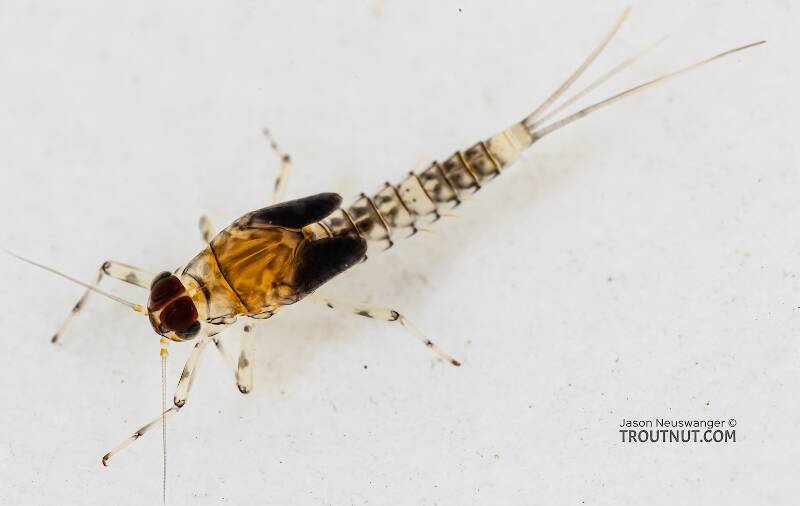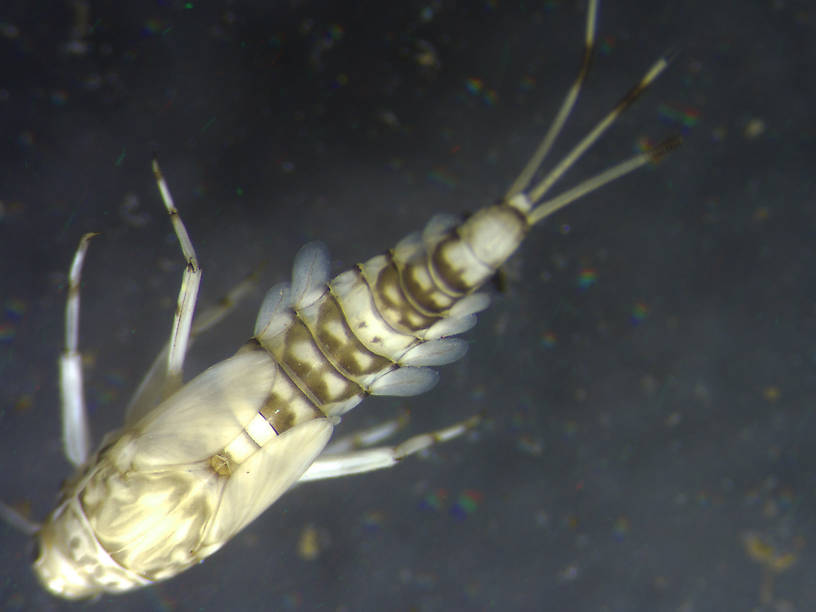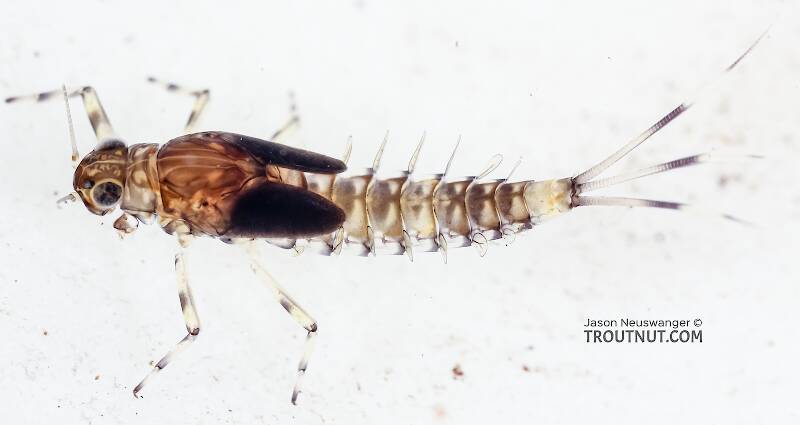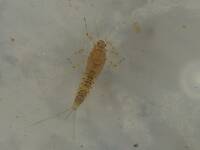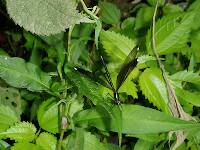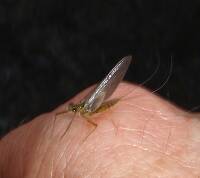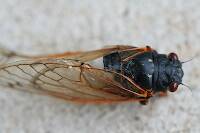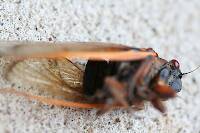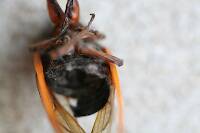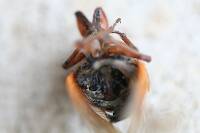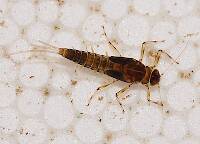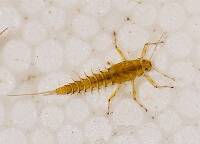
Hex Mayflies
Hexagenia limbata
The famous nocturnal Hex hatch of the Midwest (and a few other lucky locations) stirs to the surface mythically large brown trout that only touch streamers for the rest of the year.
Featured on the forum

This is the first of it's family I've seen, collected from a tiny, fishless stream in the Cascades. The three species of this genus all live in the Northwest and are predators that primarily eat stonefly nymphs Merritt R.W., Cummins, K.W., and Berg, M.B. (2019).

Troutnut is a project started in 2003 by salmonid ecologist Jason "Troutnut" Neuswanger to help anglers and
fly tyers unabashedly embrace the entomological side of the sport. Learn more about Troutnut or
support the project for an enhanced experience here.
This topic is about the Mayfly Species Baetis flavistriga
This is one of the most widespread and abundant Baetis species, and it may produce fishable hatches under a variety of conditions.This species is known in angling books by several old synonyms, including Baetis quebecensus, Baetis levitans, Baetis cingulatus, and Baetis phoebus, in addition to the correct name.
Example specimens
Konchu on Jan 17, 2009January 17th, 2009, 11:21 pm EST
Anyone have observations that they are willing to share of different flavistriga broods?
Jason says that B. flavistriga is a "combination of widely varying types in different places, it's hard to piece the information together into reliable hatch dates for the different broods in any given location." This is stated very well.
As part of my bug work, I'm trying to tease apart some of these "varying types" to see what, if anything, they might represent. Tapping into the experience base here might help.
Jason says that B. flavistriga is a "combination of widely varying types in different places, it's hard to piece the information together into reliable hatch dates for the different broods in any given location." This is stated very well.
As part of my bug work, I'm trying to tease apart some of these "varying types" to see what, if anything, they might represent. Tapping into the experience base here might help.
Quick Reply
Related Discussions
Topic
Replies
Last Reply
27
Jul 3, 2008
by Shawnny3
by Shawnny3


